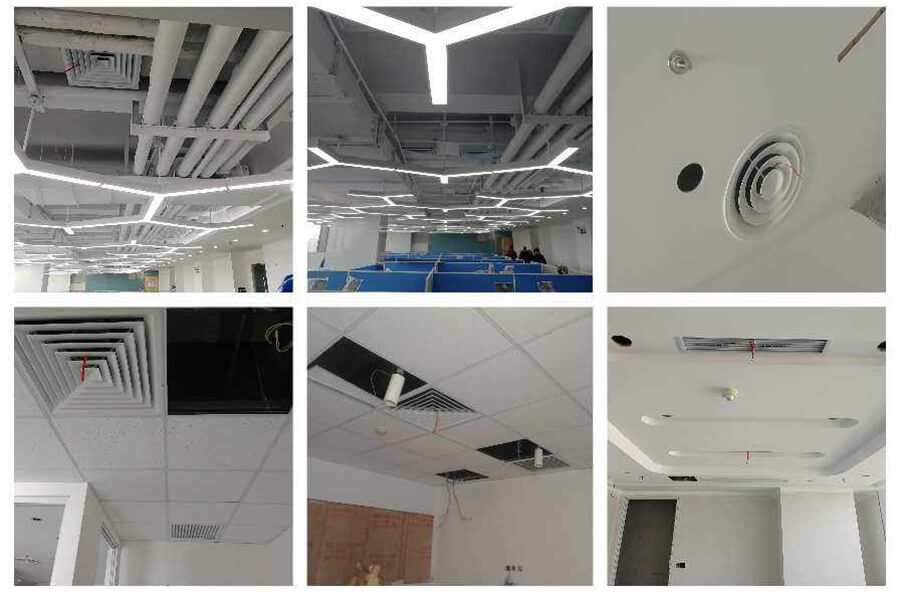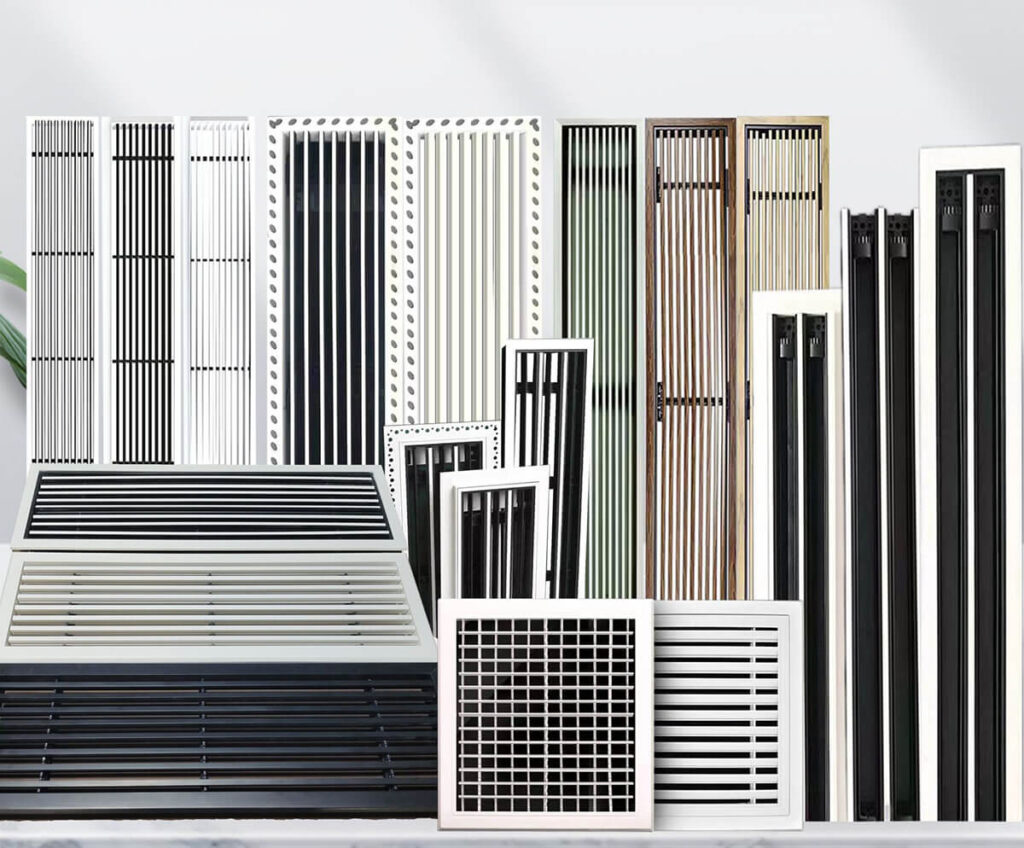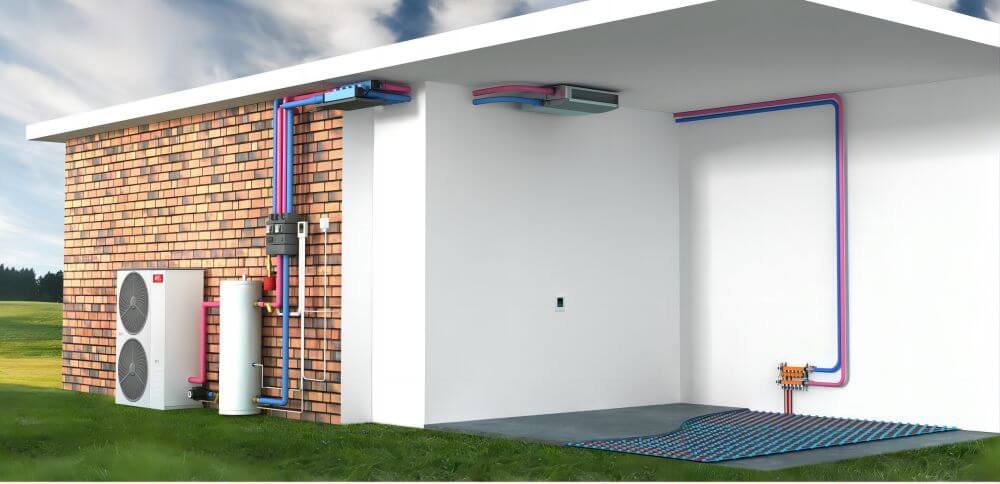Maintaining indoor air quality and comfort is a critical aspect of modern living and working environments. HVAC/AC systems play a pivotal role in this, ensuring that air is properly circulated, filtered, and delivered at the right temperature. However, the effectiveness of these systems largely depends on the design and implementation of HVAC/AC diffusers and grilles.
Adhering to building codes and standards is essential for the safe and efficient operation of these systems. In Australia, specific regulations govern the installation and maintenance of HVAC/AC components, including diffusers and grilles. This article will delve into the relevant building codes and standards in Australia.

Relevant Australian Building Codes and Standards
1. National Construction Code (NCC)
The National Construction Code (NCC) is the primary regulatory framework governing building practices in Australia. It sets out the minimum requirements for the safety, health, amenity, and sustainability of new buildings and renovations.
Key Sections Relevant to HVAC/AC Systems:
- Section J: Focuses on energy efficiency, including requirements for HVAC/AC systems to ensure they contribute to overall building energy performance.
- Section F: Addresses health and amenity, which includes ventilation requirements essential for maintaining indoor air quality.
The NCC is updated regularly to incorporate new standards and technologies, ensuring that building practices remain current and effective.
2. Australian Standards (AS)
In addition to the NCC, several Australian Standards (AS) provide detailed specifications and guidelines for HVAC/AC systems, including diffusers and grilles. These standards are crucial for ensuring that installations meet the necessary performance and safety criteria.
AS 1668: The Use of Ventilation and Air Conditioning in Buildings:
- Part 1: Covers fire and smoke control systems. It includes requirements for the placement and type of diffusers and grilles to prevent the spread of fire and smoke.
- Part 2: Addresses mechanical ventilation for acceptable indoor air quality. This part outlines the minimum air change rates and ventilation effectiveness, directly impacting the design and installation of diffusers and grilles.
AS 4254: Ductwork for Air-Handling Systems in Buildings:
- Part 1: Provides specifications for flexible ductwork, including how diffusers should be connected to ensure airtightness and efficiency.
- Part 2: Focuses on rigid ductwork, detailing the materials and construction standards necessary for effective air distribution.
3. Material and Design Requirements
Material Specifications:
- HVAC/AC diffusers and grilles must be constructed from durable, non-corrosive materials to withstand varying environmental conditions. Common materials include aluminum, stainless steel, and high-quality plastics, which offer longevity and resistance to wear and tear.
Design Criteria:
- The design of diffusers and grilles is crucial for optimal performance. They should facilitate even air distribution, minimizing hot or cold spots within a space.
- Noise reduction is another critical aspect. Properly designed diffusers and grilles should operate quietly to maintain a comfortable indoor environment.
- Aesthetic considerations are also important, as these components should blend seamlessly with the interior décor while maintaining functionality.
4. Installation Guidelines
Proper Installation Practices:
- Installation must ensure that diffusers and grilles are securely mounted and properly aligned. Misalignment can lead to inefficient air distribution and increased noise levels.
- Connections between ductwork and diffusers must be airtight to prevent air leaks and ensure efficient system performance. The use of appropriate sealants and fasteners is essential.
Qualified Professionals:
- The standards recommend that qualified HVAC professionals carry out installations to ensure compliance with all relevant codes and standards. This ensures that installations are done correctly and safely.
5. Maintenance and Testing Requirements
Regular Maintenance:
- Regular maintenance is necessary to ensure that diffusers and grilles continue to operate efficiently. This includes cleaning, inspecting for damage, and checking for proper airflow.
- Routine maintenance helps to identify and address issues before they become major problems, ensuring the longevity of the HVAC/AC system.
Testing and Compliance:
- Periodic testing is required to verify that the system meets the performance criteria outlined in the standards. This includes checking airflow rates, pressure drops, and overall system efficiency.
- Compliance testing ensures that the system continues to operate within the parameters set by the building codes, providing a safe and comfortable indoor environment.
By adhering to these building codes and standards, industry professionals can ensure that HVAC/AC diffusers and grilles in Australian buildings are safe, efficient, and effective. This comprehensive approach not only enhances system performance but also ensures regulatory compliance, protecting both installers and occupants.

Case Studies or Examples
Compliance in Practice
Example 1: Commercial Office Building in Sydney:
- In a recent renovation of a commercial office building in Sydney, the installation of new HVAC/AC diffusers and grilles was carried out in strict accordance with the NCC and Australian Standards.
- Outcome: The building achieved optimal air distribution, significantly improving indoor air quality and occupant comfort. Regular maintenance schedules were established, ensuring ongoing compliance and system efficiency.
Example 2: Residential Complex in Melbourne:
- A large residential complex in Melbourne underwent an upgrade of its HVAC/AC system, including the replacement of old diffusers and grilles with modern, compliant models.
- Outcome: The new installations reduced noise levels and improved temperature regulation throughout the complex. Compliance with AS 1668 and AS 4254 was ensured through rigorous testing and professional installation.
Common Issues and Solutions
Issue 1: Air Leakage:
- Solution: During an inspection of an office building, significant air leakage was detected at the connections between ductwork and diffusers. This issue was resolved by re-sealing the connections with appropriate sealants and ensuring that all components were properly fastened.
Issue 2: Noise Levels:
- Solution: In a residential building, occupants reported excessive noise from the HVAC system. An investigation revealed that the diffusers were improperly aligned. Adjustments were made to ensure proper alignment, and additional noise-dampening materials were installed, significantly reducing the noise levels.
Tips for Ensuring Compliance
Selecting the Right Products
Choose Compliant Products:
- Ensure that all HVAC/AC diffusers and grilles meet Australian Standards and the NCC requirements. Look for products that have been tested and certified for compliance.
- Quality Assurance: Opt for reputable manufacturers who provide quality assurance and documentation to verify that their products comply with relevant standards.
Consider Environmental Conditions:
- Select materials that are suitable for the specific environmental conditions of your installation. For example, coastal areas may require materials with higher resistance to corrosion.
Professional Installation
Hire Qualified HVAC Professionals:
- The importance of hiring qualified professionals cannot be overstated. Experienced HVAC installers are familiar with the intricacies of the codes and standards and can ensure that installations are done correctly.
- Training and Certification: Choose contractors who have relevant training and certifications, ensuring they are up-to-date with the latest standards and best practices.
Detailed Installation Plans:
- Develop detailed installation plans that specify the placement, alignment, and connection of diffusers and grilles. These plans should be based on the guidelines provided in the NCC and Australian Standards.
Regular Inspections and Maintenance
Routine Inspections:
- Schedule regular inspections to check for compliance with standards. Inspections should include checking for air leaks, proper alignment, and overall system performance.
- Maintenance Logs: Keep detailed logs of all inspections and maintenance activities. This documentation can be crucial for ongoing compliance and identifying recurring issues.
Proactive Maintenance:
- Implement a proactive maintenance schedule to address potential issues before they escalate. Regular cleaning, testing, and adjustments can help maintain optimal system performance and compliance.
- Component Replacement: Replace worn or damaged components promptly to ensure the system continues to meet performance standards.

Conclusion
Adhering to the relevant building codes and standards for HVAC/AC diffusers and grilles in Australia is essential for ensuring safety, efficiency, and comfort in buildings. By selecting compliant products, employing qualified professionals for installation, and maintaining regular inspection and maintenance routines, industry professionals can ensure that their HVAC/AC systems meet the necessary requirements.
These practices not only help avoid legal implications but also enhance the performance and longevity of the systems, providing a better indoor environment for occupants. Compliance with the NCC and Australian Standards is not just a regulatory requirement but a commitment to quality and safety in the HVAC industry.
References
- National Construction Code (NCC): The primary regulatory framework governing building practices in Australia. Access the latest version at the Australian Building Codes Board (ABCB) website.
- AS 1668: The Use of Ventilation and Air Conditioning in Buildings: Covers fire and smoke control systems and mechanical ventilation for indoor air quality. Available through Standards Australia.
- AS 4254: Ductwork for Air-Handling Systems in Buildings: Provides specifications for both flexible and rigid ductwork. Access through Standards Australia.
- Australian Building Codes Board (ABCB): Provides resources and updates on the NCC and other building standards. Visit their website for more information.
If you want to know more, please click below:
- Grilles, Registers & Diffusers – The Ultimate Guide
- HVAC Linear Slot Diffusers – The Ultimate Guide
- HVAC Egg Crate Diffuser – The Ultimate Guide
- HVAC Jet Nozzle Diffuser – The Ultimate Guide
- HVAC Linear Bar Grilles – The Ultimate Guide
- HVAC Air Swirl Diffusers – The Ultimate Guide
- HVAC Round Ceiling Diffusers – The Ultimate Guide
- Round Ceiling Diffusers – The Ultimate Guide
- Exhaust Air Louver – The Ultimate Guide
- HVAC Registers – The Ultimate Guide


